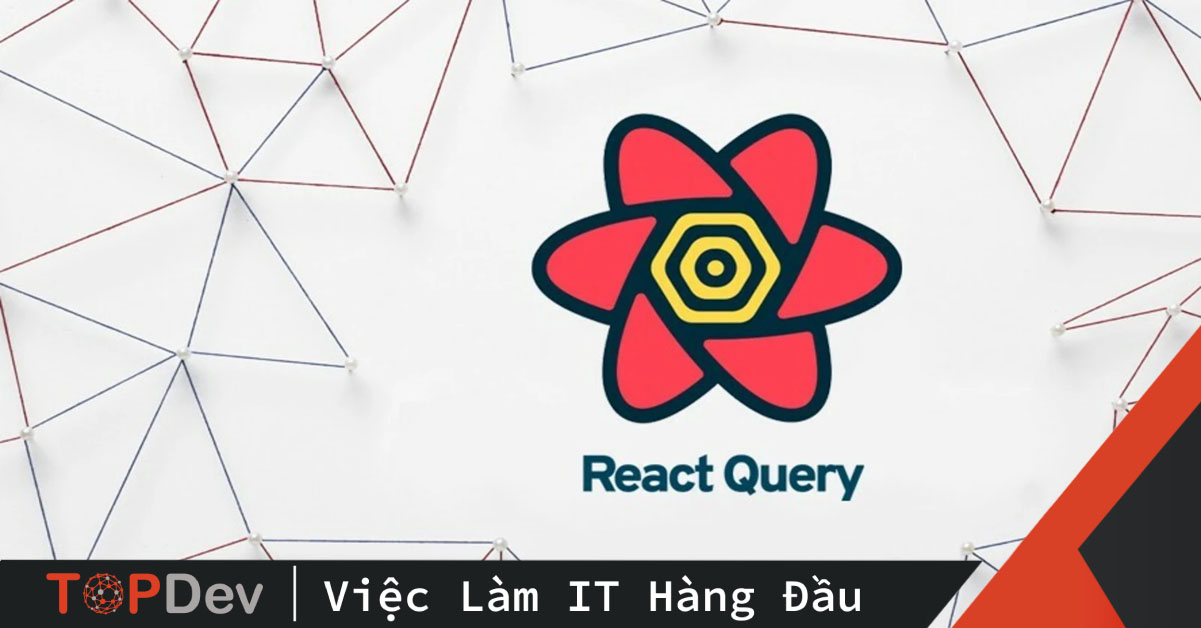Use Mutation React Query
What is React Query?
React Query is a state management library for managing remote and asynchronous data in React applications. It helps you fetch, cache, and synchronize data effortlessly by leveraging the power of React’s hooks and the flexibility of the Query and Mutation APIs.
Why Use Mutation in React Query?
Mutations in React Query are used to modify data on the server. They handle the sending of data to the server, updating the optimistic response on the client, and handling the success or error responses from the server. Using mutations ensures that your client-side state stays in sync with the server, providing a seamless experience for your users.
How to Set up Mutation in React Query?
To set up a mutation in React Query, you need to use the `useMutation` hook provided by the library. This hook takes an async function as an argument and returns an array of values and functions that you can use to handle the mutation.
Here’s an example of how you can set up a mutation:
“`jsx
import { useMutation } from ‘react-query’;
const createPost = async (data) => {
// Make an API request to create a new post
const response = await fetch(‘/api/posts’, {
method: ‘POST’,
body: JSON.stringify(data),
headers: {
‘Content-Type’: ‘application/json’,
},
});
const json = await response.json();
return json;
};
const MyComponent = () => {
const [mutate, { data, isLoading, error }] = useMutation(createPost);
// Handle the mutation here
return (
// Your component’s rendering logic
);
};
“`
In the example above, the `createPost` function is the asynchronous function that represents the server-side mutation. The `mutate` function returned by `useMutation` can be called whenever you want to trigger the mutation.
How to Perform a Mutation in React Query?
Performing a mutation using React Query is as simple as calling the `mutate` function returned by the `useMutation` hook. You can call this function with the necessary data as a parameter.
“`jsx
const MyComponent = () => {
const [mutate, { data, isLoading, error }] = useMutation(createPost);
const handleFormSubmit = (formData) => {
// Call the mutate function to perform the mutation
mutate(formData);
};
return (
// Your component’s rendering logic
);
};
“`
In the example above, the `handleFormSubmit` function is called when a form is submitted. It calls the `mutate` function with the form data as the parameter, triggering the mutation.
Handling Success and Error Responses in React Query Mutation
When you perform a mutation using React Query, you can handle the success and error responses in a straightforward manner. The `useMutation` hook returns an object containing the mutation’s `data`, `isLoading`, and `error` properties.
“`jsx
const MyComponent = () => {
const [mutate, { data, isLoading, error }] = useMutation(createPost);
const handleFormSubmit = async (formData) => {
try {
// Call the mutate function to perform the mutation
await mutate(formData);
// Handle the success response here
} catch (error) {
// Handle the error response here
}
};
return (
// Your component’s rendering logic
);
};
“`
In the example above, the success and error responses are handled using a `try/catch` block. If the mutation is successful, you can access the updated data through the `data` property. If an error occurs, the `error` property will contain the error message.
Optimistic Updates in React Query Mutation
React Query allows you to perform optimistic updates, which means that the client’s state is updated optimistically before receiving the response from the server. This leads to a faster and more responsive user experience.
To use optimistic updates, you need to provide an `optimisticResponse` option to the `useMutation` hook. This option should be a function that returns the optimistically updated data.
“`jsx
const MyComponent = () => {
const [mutate, { data, isLoading, error }] = useMutation(createPost, {
optimisticResponse: (formData) => {
// Return the optimistically updated data based on the form data
return { id: ‘temp-id’, …formData };
},
});
const handleFormSubmit = async (formData) => {
try {
// Call the mutate function to perform the mutation
await mutate(formData);
// Handle the success response here
} catch (error) {
// Handle the error response here
}
};
return (
// Your component’s rendering logic
);
};
“`
In the example above, the `optimisticResponse` option is provided to the `useMutation` hook. It returns an object containing the id of the optimistic update (`’temp-id’` in this case) and the form data.
Best Practices for Using Mutation in React Query
Here are some best practices to keep in mind when using mutations in React Query:
1. Always handle success and error responses appropriately to provide meaningful feedback to the user.
2. Use the `isLoading` property to show loading indicators while a mutation is being performed.
3. Take advantage of optimistic updates to provide a snappy user experience.
4. Consider using TypeScript to provide type safety when using mutations.
5. Use the `mutateAsync` function instead of the `mutate` function if you need to perform some logic after the mutation is complete.
6. Utilize the `mutate` function’s second argument to customize the behavior of the mutation, such as providing different error handling or tracking options.
In conclusion, React Query’s mutation feature allows for easy and efficient data modification in React applications. By following the best practices and utilizing the provided hooks and options, you can create seamless user experiences while efficiently managing data fetching and state synchronization.
FAQs
**Q: What is an example of using `useMutation` in React Query?**
Here’s an example of using `useMutation` in React Query:
“`jsx
import { useMutation } from ‘react-query’;
const createPost = async (data) => {
// Make an API request to create a new post
const response = await fetch(‘/api/posts’, {
method: ‘POST’,
body: JSON.stringify(data),
headers: {
‘Content-Type’: ‘application/json’,
},
});
const json = await response.json();
return json;
};
const MyComponent = () => {
const [mutate, { data, isLoading, error }] = useMutation(createPost);
const handleFormSubmit = (formData) => {
// Call the mutate function to perform the mutation
mutate(formData);
};
return (
// Your component’s rendering logic
);
};
“`
In this example, there’s a `createPost` async function representing the server-side mutation. The `useMutation` hook is used to fetch, update, and manage the mutation. The `mutate` function can then be called to perform the mutation.
**Q: How to use `useMutation` in TypeScript with React Query?**
To use `useMutation` in TypeScript with React Query, you can provide the mutation function as a generic type argument to ensure type safety. Here’s an example:
“`tsx
import { useMutation } from ‘react-query’;
interface Post {
id: number;
title: string;
content: string;
}
const createPost = async (data: Post): Promise
const response = await fetch(‘/api/posts’, {
method: ‘POST’,
body: JSON.stringify(data),
headers: {
‘Content-Type’: ‘application/json’,
},
});
const json = await response.json();
return json;
};
const MyComponent = () => {
const [mutate, { data, isLoading, error }] = useMutation
const handleFormSubmit = (formData: Post) => {
mutate(formData);
};
return (
// Your component’s rendering logic
);
};
“`
In this example, the generic types `
**Q: How to prefetch data in React Query using mutations?**
React Query allows you to prefetch data by using the mutations’ `onMutate` callback. This callback is executed before performing the mutation, and you can use it to prefetch the necessary data. Here’s an example:
“`jsx
import { useMutation, useQueryClient } from ‘react-query’;
const createPost = async (data) => {
// Make an API request to create a new post
const response = await fetch(‘/api/posts’, {
method: ‘POST’,
body: JSON.stringify(data),
headers: {
‘Content-Type’: ‘application/json’,
},
});
const json = await response.json();
return json;
};
const MyComponent = () => {
const queryClient = useQueryClient();
const [mutate, { data, isLoading, error }] = useMutation(createPost, {
onMutate: async (formData) => {
// Prefetch the necessary data
await queryClient.prefetchQuery(‘posts’, fetchPosts);
},
});
// Rest of the component’s code
};
“`
In this example, the `onMutate` callback is used to prefetch the `posts` data using `queryClient.prefetchQuery`. This ensures that the data is preloaded before performing the mutation, resulting in a smoother user experience.
**Q: How to remove queries after a mutation in React Query?**
React Query provides the `removeQueries` function that allows you to remove specific queries after a mutation. This can be useful when you want to refetch or invalidate data after a mutation. Here’s an example:
“`jsx
import { useMutation, queryCache } from ‘react-query’;
const createPost = async (data) => {
// Make an API request to create a new post
const response = await fetch(‘/api/posts’, {
method: ‘POST’,
body: JSON.stringify(data),
headers: {
‘Content-Type’: ‘application/json’,
},
});
const json = await response.json();
return json;
};
const MyComponent = () => {
const [mutate] = useMutation(createPost, {
onSuccess: () => {
// Remove the ‘posts’ query after a successful mutation
queryCache.removeQueries(‘posts’);
},
});
// Rest of the component’s code
};
“`
In this example, the `onSuccess` callback is used to remove the `’posts’` query using `queryCache.removeQueries`. This ensures that the `’posts’` query is refetched or invalidated after a successful mutation.
**Q: How to check if a mutation is in progress in React Query?**
React Query provides the `isLoading` property, which indicates whether a mutation is currently in progress or not. By checking this property, you can show loading indicators or disable certain UI elements while the mutation is being performed. Here’s an example:
“`jsx
const MyComponent = () => {
const [mutate, { isLoading }] = useMutation(createPost);
const handleFormSubmit = async (formData) => {
if (isLoading) {
// Mutation is already in progress, do not perform another one
return;
}
try {
await mutate(formData);
// Handle the success response here
} catch (error) {
// Handle the error response here
}
};
return (
// Your component’s rendering logic
);
};
“`
In this example, the `isLoading` property is used to check if the mutation is already in progress. If it is, the form submission function does not perform another mutation. This prevents duplicate or conflicting mutations from being executed.
React Query Tutorial – 21 – Mutations
What Is The Difference Between Use Mutation And Use Query?
When working with GraphQL in React applications, you may come across two commonly used hooks: useMutation and useQuery. These hooks allow you to interact with your GraphQL server and perform various operations like querying data or mutating it. While both serve similar purposes, there are key distinctions between these hooks that developers need to understand. In this article, we will explore the differences between useMutation and useQuery in detail to help you make the right choices when working with GraphQL in your React applications.
Understanding useMutation:
useMutation is a React hook that enables you to perform mutation operations on your GraphQL server. Mutations are used to modify data on the server, such as creating, updating, or deleting records. When you invoke the useMutation hook, it returns a tuple containing a mutation function and an object representing the result of the mutation.
The mutation function is used to trigger the mutation operation by passing it the necessary variables and arguments. Once the mutation is executed, the result object contains various properties like data, loading, error, etc., which provide information about the mutation’s status.
It is important to note that useMutation does not automatically update your UI with the result data like useQuery does. Instead, it provides you with the necessary tools to handle the mutation and update your UI as needed. Therefore, it is your responsibility to update the UI based on the mutation result.
Understanding useQuery:
In contrast to useMutation, useQuery is intended for performing query operations on your GraphQL server. Queries allow you to fetch data from the server without modifying it. When you use the useQuery hook, it returns an object containing properties like data, loading, error, and others.
The data property holds the result of the query operation, which can be used to dynamically render components in your UI. The loading property indicates whether the query is still in progress, while the error property stores any errors that may have occurred during the query execution.
Unlike useMutation, useQuery automatically updates your UI when the query result changes. This means that whenever the data fetched by the query changes, your UI components will be re-rendered accordingly.
Differences between useMutation and useQuery:
1. Purpose:
useMutation is utilized for executing mutation operations (creating, updating, or deleting data) on your server, while useQuery is designed specifically for query operations (fetching data from the server).
2. Result Handling:
useMutation does not automatically update your UI; you need to manually handle the mutation result and update the UI accordingly. On the other hand, useQuery automatically updates your UI with the query result data whenever it changes.
3. Returned Values:
useMutation returns a mutation function and a result object containing properties like data, loading, error, etc. Meanwhile, useQuery returns an object containing properties like data, loading, error, etc., to access the query result and monitor its status.
4. Use Cases:
useMutation is commonly used when you want to trigger a mutation operation, such as creating a new user or updating an existing record. useQuery, on the other hand, is used to fetch and display data in your UI, such as fetching a user’s profile information.
FAQs:
Q: Can I use useQuery for mutation operations?
A: No, useQuery is specifically designed for query operations and should not be used for mutation operations. For mutations, use the useMutation hook.
Q: How can I update my UI with the mutation result when using useMutation?
A: After invoking the mutation function returned by useMutation, you can update your UI manually by accessing the mutation result from the result object and triggering the necessary component updates based on that data.
Q: Can I use useMutation and useQuery together in a single component?
A: Yes, you can use both hooks in the same component. For example, you might use useQuery to fetch initial data and then use useMutation to modify that data based on user interactions.
Q: Are there any performance considerations when using useMutation or useQuery?
A: Both hooks handle caching and optimize the communication with the GraphQL server. However, it is generally recommended to carefully manage the fetched data to avoid excessive re-renders and unnecessary network requests.
In conclusion, while useMutation and useQuery are both essential hooks for working with GraphQL in React applications, they serve different purposes. Use useMutation to trigger mutation operations and manually update your UI based on the mutation result. Use useQuery to fetch data from the server and automatically update your UI whenever the query result changes. Understanding these differences will enable you to make the best choices when interacting with your GraphQL server.
Why Use Usemutation In React Query?
React Query is a popular library used in React applications for managing and synchronizing server state and caching. It provides a wide variety of hooks and utilities that simplify data fetching and updating, including the useMutation hook. The useMutation hook is specifically designed to handle server-side mutations or updates to data, making it a powerful tool for building interactive and responsive applications. In this article, we will explore the benefits of using useMutation in React Query and how it can enhance the development experience.
Benefits of useMutation:
1. Simplified Mutation Handling:
With useMutation, handling mutations becomes a breeze. It abstracts away the complexity of making API calls and handling the different stages of mutation, such as loading, success, and error. The useMutation hook takes care of sending the mutation request, updating the local state, and providing the necessary response back to the application.
2. Optimistic Updates:
Optimistic updates are a technique used to provide instantaneous feedback to the user while waiting for the server response. With useMutation, implementing optimistic updates becomes effortless. It allows you to update the local state optimistically before the server confirmation, resulting in a smooth user experience and reducing perceived latency.
3. Integrated Error Handling:
Error handling can be a tedious and error-prone task when working with server-side mutations. The useMutation hook provides robust error handling out of the box, enabling you to easily handle different types of errors returned by the server. It allows you to customize error messages, retry mutations, or redirect to error pages, giving you greater control over how errors are handled in your application.
4. Automatic Data Refresh:
In complex applications, it is common to have multiple components sharing the same data. Updating the server-side data should trigger a refresh across all components that rely on this data. The useMutation hook handles data refetching automatically after a successful mutation, ensuring that all components relying on the updated data are up to date. This simplifies data management and eliminates the need for manual data synchronization.
5. Caching and Background Updates:
React Query provides powerful caching capabilities out of the box, allowing you to cache the results of mutations locally. When using useMutation, the result of successful mutations is automatically stored in the cache, making it available for subsequent queries or mutations. This allows for instant background updates and reduces the reliance on server round trips.
6. Integration with React Ecology:
React Query seamlessly integrates with other popular libraries and tools within the React ecosystem, such as React Router, Redux, and more. This makes it easy to incorporate useMutation into your existing application without having to rewrite significant portions of your codebase. The compatibility and flexibility of useMutation enable you to leverage the entire React ecosystem’s benefits while still enjoying the simplicity and power of React Query.
7. Easy Testing:
UseMutation makes testing mutations and their effects on the UI straightforward. React Query provides comprehensive testing utilities, allowing you to mock mutations, simulate different scenarios, and assert the expected state changes resulting from the mutations. This enhances the testability of your application and ensures robustness by catching potential bugs early on.
FAQs:
Q1: Can useMutation be used with any HTTP methods?
A1: Yes, useMutation supports all HTTP methods, such as POST, PUT, PATCH, and DELETE, making it versatile enough for a wide range of mutation scenarios.
Q2: Does useMutation handle file uploads?
A2: Yes, useMutation can handle file uploads by including the file as part of the mutation’s payload. It supports sending files using FormData or binary file uploads.
Q3: Can useMutation handle optimistic updates for complex mutations?
A3: Yes, useMutation supports optimistic updates even for complex mutations involving multiple data dependencies. You can use the onSuccess callback to update the local state optimistically based on the provided response.
Q4: How does useMutation handle mutations that require authentication or authorization?
A4: useMutation seamlessly integrates with authorization and authentication libraries and can include authentication tokens or headers in the mutation requests. You can use the headers option or interceptors to add the necessary authorization details.
Q5: Can useMutation handle API rate limiting or request throttling?
A5: Yes, useMutation can automatically handle API rate limiting and request throttling by respecting the server response’s Retry-After header or by configuring custom retry and retryDelay options.
In conclusion, the useMutation hook in React Query offers numerous benefits that enhance the development experience for handling server-side mutations. Its simplicity, error handling capabilities, data refreshing, and seamless integration with existing React tools make it a powerful tool for building interactive and responsive applications. Whether you are working on a small personal project or a large-scale enterprise application, useMutation can significantly improve your productivity and deliver a delightful user experience.
Keywords searched by users: use mutation react query useMutation example, @tanstack/react-query, useMutation typescript, mutateAsync React Query, Prefetch react-query, Mutate React Query, removeQueries react-query, isLoading react query
Categories: Top 31 Use Mutation React Query
See more here: nhanvietluanvan.com
Usemutation Example
GraphQL is an open-source query language that allows developers to retrieve, manipulate, and update data efficiently. One of its core features is mutations, which enable users to modify server-side data. In this article, we will dive deep into the useMutation hook, a popular feature of GraphQL that simplifies the process of updating data. Additionally, we will provide a step-by-step example of how to implement useMutation in your code. Let’s get started!
Understanding useMutation
useMutation is a hook provided by libraries such as Apollo Client and React Query, which facilitate GraphQL operations in client-side applications. It allows developers to send mutation requests to the server and obtain updated data in response. The useMutation hook provides an easy-to-use interface for handling mutations and keeps track of the mutation’s state, including loading, error, and data.
Step-by-step example
To illustrate the use of the useMutation hook, let’s consider a simple TODO application. We will build a mutation to add a new task to our list of tasks.
1. Setting up the client
Firstly, we need to set up the GraphQL client. For this example, we will use Apollo Client. Install the necessary packages and configure the client with the server’s URL.
2. Creating the mutation
Next, we define our mutation. In this case, we want to create a new task, so we create a mutation called ADD_TASK.
“`graphql
mutation ADD_TASK($title: String!) {
addTask(title: $title) {
id
title
}
}
“`
3. Implementing useMutation
Now that we have our mutation, we can implement useMutation in our React component.
“`jsx
import { useMutation } from ‘@apollo/client’;
const AddTaskForm = () => {
const [title, setTitle] = useState(”);
const [addTask, { loading, error }] = useMutation(ADD_TASK);
const handleSubmit = (e) => {
e.preventDefault();
addTask({ variables: { title } });
setTitle(”);
};
return (
);
};
“`
In this code snippet, we define our form component `AddTaskForm` that handles the form submission. When the form is submitted, `addTask` is called with the mutation variables. We also handle the loading and error states, displaying appropriate feedback to the user.
FAQs
Q1: Can I use useMutation with other GraphQL clients?
Yes, useMutation is commonly provided by various GraphQL client libraries, including Apollo Client, React Query, and Relay. The syntax may slightly differ, but the purpose remains the same.
Q2: How does useMutation handle optimistic updates?
Optimistic updates are a technique used to provide instant feedback to the user by updating the UI optimistically before the server responds. useMutation supports this feature, allowing you to specify an `optimisticResponse` option when calling the mutation. This option defines the expected response from the server before the actual response arrives.
Q3: How can I update the local cache after a mutation?
By default, useMutation updates the local cache automatically, ensuring that the UI reflects the latest data after a mutation. However, if you need fine-grained control, some libraries provide additional options to customize cache updates, such as `update` or `refetchQueries`.
Q4: Can I use useMutation with subscriptions?
No, useMutation is specifically designed for sending mutation requests, which are typically short-lived operations. To handle real-time updates using GraphQL subscriptions, you should use `useSubscription` or similar hooks provided by the respective GraphQL client libraries.
In conclusion, the useMutation hook proves to be a handy tool for managing GraphQL mutations. It simplifies the process of sending mutation requests, tracking the mutation’s state, and handling loading and error conditions. By following the step-by-step example outlined in this article, you can easily implement useMutation in your application and enjoy its benefits.
@Tanstack/React-Query
In today’s fast-paced web development landscape, managing state efficiently is crucial to delivering seamless user experiences. React, a popular JavaScript library for building UIs, provides developers with a powerful toolset for creating dynamic web applications. However, managing complex state in React can be a challenging task, often leading to performance issues and suboptimal user experiences.
To address this challenge, the talented team at TanStack has developed @tanstack/react-query, a library that revolutionizes state management in React. In this article, we will take an in-depth look at @tanstack/react-query, exploring its functionality, features, and benefits. We will also address some commonly asked questions to help you better understand and leverage this powerful library in your React development projects.
What is @tanstack/react-query?
@tanstack/react-query is a state management library for React that focuses on efficient data fetching, caching, and synchronization. It simplifies the process of managing and updating complex state in React applications by providing a set of intuitive hooks and utilities.
Key Features of @tanstack/react-query:
1. Data Fetching: @tanstack/react-query handles data fetching with ease, supporting various data sources such as REST APIs, GraphQL servers, and more. It intelligently manages cache and provides options for request retries, background polling, and data synchronization between multiple components.
2. Caching: The library utilizes a powerful caching mechanism that automatically stores and invalidates data based on customizable rules. This allows for optimal performance by avoiding unnecessary network requests and providing instant access to cached data.
3. Optimistic Updates: @tanstack/react-query supports optimistic updates, enabling you to update your UI immediately based on user interactions while the actual server response is pending. This ensures a snappy user experience by reducing perceived latency.
4. Global and Local Query Configuration: With @tanstack/react-query, you have the flexibility to configure queries globally or locally within specific components. This allows you to fine-tune query behavior based on specific requirements while maintaining a consistent approach across your application.
5. Mutation and Query Invalidation: The library provides a convenient way to update data through mutations while automatically invalidating affected queries. This ensures that your UI reflects the latest data accurately, even after updates.
6. Integration with DevTools: @tanstack/react-query seamlessly integrates with popular React development tools such as React DevTools and Redux DevTools. This simplifies debugging and monitoring of query states, making it effortless to identify potential issues and optimize performance.
7. Type Safety and TypeScript Support: The library embraces TypeScript and provides excellent type inference support. This helps catch potential errors at compile-time, resulting in more robust and maintainable code.
Frequently Asked Questions:
Q1. How does @tanstack/react-query compare to other state management libraries like Redux or MobX?
@tanstack/react-query focuses specifically on data fetching, caching, and synchronization, making it complementary to Redux or MobX. It excels in scenarios where you need efficient management of remote data sources and automatic cache invalidation. However, Redux or MobX may still be preferred for complex application-wide state management.
Q2. Can I use @tanstack/react-query with any back-end technology?
Yes, @tanstack/react-query is backend-agnostic and can work seamlessly with any data source that exposes an API, be it REST, GraphQL, or other forms of communication.
Q3. Is @tanstack/react-query suitable for small projects?
Absolutely! @tanstack/react-query’s simplicity and ease of use make it suitable for projects of any size. It scales well and can adapt to larger projects as the complexity grows.
Q4. How does @tanstack/react-query handle authentication and authorization?
@tanstack/react-query provides built-in support for managing authentication and authorization. You can easily integrate your authentication logic with query configurations to ensure secure access to protected resources.
Q5. Can I use @tanstack/react-query with other popular frontend frameworks like Vue or Angular?
As @tanstack/react-query is specifically designed for React applications, it may not work out of the box with other frameworks. However, there are similar libraries available for other frameworks, such as Vue Query or Angular Query, that offer similar functionality.
In conclusion, @tanstack/react-query is a powerful state management library for React that enhances the efficiency and performance of data fetching and caching. With its intuitive API, seamless integration with existing tools, and robust TypeScript support, it empowers developers to build highly responsive and scalable web applications. By simplifying complex state management tasks, @tanstack/react-query streamlines the development process, allowing developers to focus on delivering exceptional user experiences.
Usemutation Typescript
When developing a web application, developers often need to interact with APIs to perform CRUD operations (Create, Read, Update, Delete) on data. In the world of React and TypeScript, one popular way to accomplish this is by using the useMutation hook provided by various libraries such as Apollo Client, React Query, and Relay.
In this article, we will explore the useMutation hook in TypeScript in depth, discussing its features, benefits, and how to effectively use it in your projects.
Understanding useMutation:
The useMutation hook is a powerful tool that allows developers to mutate (create, update, delete) data on the server. It simplifies the process of sending requests to a server and handles the response. It also provides functionality to handle conditions like optimistic updates, error handling, and more.
Using useMutation in TypeScript:
To use the useMutation hook in TypeScript, you need to follow a few steps. Firstly, you need to import it from the desired library. For example, if you are using Apollo Client, you can import it as follows:
import { useMutation } from ‘@apollo/client’;
Next, you need to define the mutation and its variables. You can provide a GraphQL mutation query as a string or import it from a separate file. You can define the input variables using the TypeScript interface for type safety. For instance:
interface CreateTodoMutationResponse {
createTodo: Todo;
}
interface CreateTodoMutationVariables {
title: string;
description: string;
}
const CREATE_TODO_MUTATION = gql`
mutation CreateTodo($title: String!, $description: String!) {
createTodo(title: $title, description: $description) {
id
title
description
}
}
`;
Once you have defined the mutation, you can use the useMutation hook as shown below:
const [createTodo, { loading, error }] = useMutation< CreateTodoMutationResponse, CreateTodoMutationVariables >(CREATE_TODO_MUTATION);
Here, createTodo is a function that sends the mutation request to the server. The loading variable indicates whether the mutation is in progress, while the error variable holds any error returned by the server.
To trigger the mutation, you can simply call the createTodo function with the required variables. For example:
createTodo({
variables: {
title: ‘Sample Todo’,
description: ‘This is a sample todo’,
},
});
The useMutation hook returns an object that includes the result of the mutation, such as the data returned by the server. You can access this data to update your application’s UI accordingly.
Advanced features of useMutation:
useMutation provides various advanced features that make it a powerful tool for handling mutations in React applications.
1. Optimistic Updates:
Optimistic updates allow your application to update the UI immediately, without waiting for the server response. This provides a smooth and responsive user experience. You can pass an optimisticResponse option to the useMutation hook to achieve this behavior:
const [createTodo] = useMutation<
CreateTodoMutationResponse,
CreateTodoMutationVariables
>(CREATE_TODO_MUTATION, {
optimisticResponse: {
__typename: ‘Mutation’,
createTodo: {
__typename: ‘Todo’,
id: ‘temp-id-123’,
title: ‘Sample Todo’,
description: ‘This is a sample todo’,
},
},
});
2. Error Handling:
Error handling is an essential aspect of mutation operations. The useMutation hook provides an error object that contains any error returned by the server. You can handle errors by checking the value of the error variable:
if (error) {
// handle error
}
3. Updating the Cache:
When a mutation modifies the server-side data, it is crucial to update the client-side cache to reflect the changes. Libraries like Apollo Client handle this cache update automatically. However, you might have to configure the cache update manually with other libraries.
4. Refetching Queries:
After a mutation, you may need to refetch queries to update the related data components. The useMutation hook provides a refetchQueries option that allows you to specify the queries to refetch. For example:
const [createTodo] = useMutation<
CreateTodoMutationResponse,
CreateTodoMutationVariables
>(CREATE_TODO_MUTATION, {
refetchQueries: [‘todos’],
});
In this example, the todos query will be refetched after the createTodo mutation completes.
FAQs:
Q1. Can I use useMutation outside of a React component?
A1. No, the useMutation hook is designed to be used within a React component. It relies on the component’s lifecycle and state management.
Q2. Which libraries support useMutation in TypeScript?
A2. Some popular libraries that support useMutation in TypeScript include Apollo Client, React Query, and Relay.
Q3. How do I handle loading state in useMutation?
A3. The useMutation hook returns a loading variable that indicates whether the mutation is in progress. You can use this variable to conditionally render loading indicators or disable UI elements.
Q4. Can I use useMutation with REST APIs?
A4. The useMutation hook is primarily designed for GraphQL mutations. However, with some libraries, you can adapt it to work with REST APIs as well.
Conclusion:
The useMutation hook is a valuable tool for handling mutations in React applications, especially when using TypeScript. Its simplicity and advanced features, such as optimistic updates and error handling, make it a popular choice among developers. By understanding and effectively utilizing useMutation, you can streamline your application’s data management and provide a smooth user experience.
Images related to the topic use mutation react query

Found 46 images related to use mutation react query theme




![ReactJS] React Query là gì ? Tại sao nên dùng React Query ? Reactjs] React Query Là Gì ? Tại Sao Nên Dùng React Query ?](https://images.viblo.asia/f0f0f584-0aeb-40fe-a4c9-43d304be13d8.png)






































Article link: use mutation react query.
Learn more about the topic use mutation react query.
- React Query – useMutation – Run, Code & Learn
- Mastering Mutations in React Query | TkDodo’s blog
- Mastering Mutations in React Query | TkDodo’s blog
- The basic guide for React Query useMutation hook
- redux-query – useMutation
- Managing state with React Query. 〽️ – DEV Community
- [ReactJS] React Query là gì ? Tại sao nên dùng React Query ?
- Sử dụng React-Query để fetch dữ liệu – Codestus.com
- Post Data With useMutation and React Query in Your ReactJS …
- A deep dive into mutations in TanStack Query – LogRocket Blog
- How to Use React Query Mutation to Create or Add Data to …
See more: https://nhanvietluanvan.com/luat-hoc